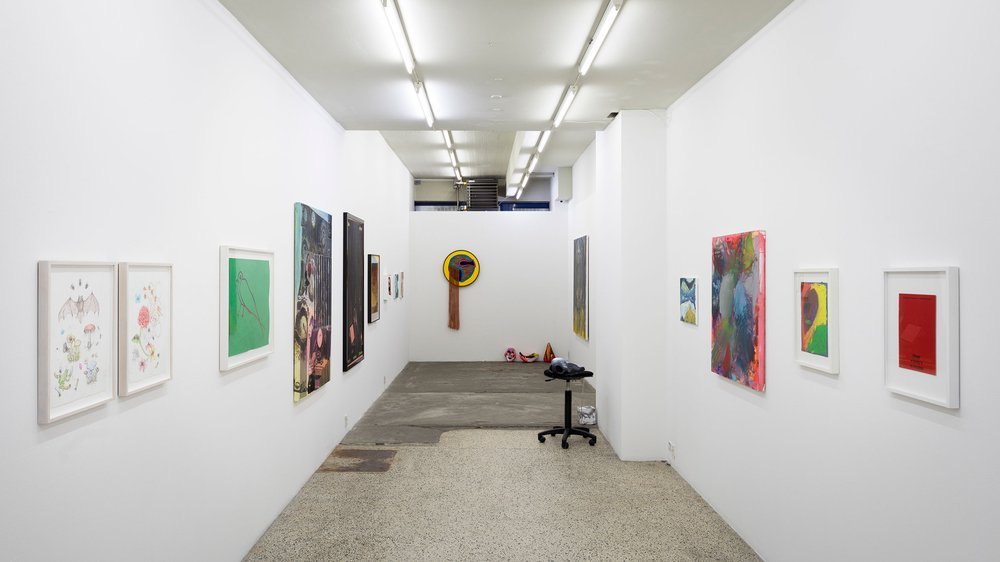Ene Bissenbakker X Slowroom Contemporary
*Archive Article: Originally published in the magazine Blacklisted Copenhagen on October 10, 2018
Web: enebissenbakker.com
You have to give respect to artists that challenge an audience. By this, I don’t mean the provocative shock and awe that has, at this point, become cliché. No, I mean the artist that challenges the audience to consider whether the art itself is worthy of consideration. Probably one the most notable example of this is Kazimir Malevich’s ‘Black Square’ painted in 1915. It’s a simple black square in the center of a white canvas.
Robert Rauschenberg took it to an even further extreme with his White Paintings painted in 1951 – a series of, what you would expect, entirely white canvases – which now sit comfortably on the white walls of New York’s Museum of Modern Art (MoMA).
What I find intriguing about these works, is the insistence that the audience put aside their expectation of what art should look like – and going even further, what response that art deserves.
This is what I was confronted with when I was first introduced to the paintings of Ene Bissenbakker in her recent exhibition at Showroom Contemporary. Her works are more visually elaborate than either Malevich’s or Rauschenberg’s, but the same immediate response from me – “hmmm, that’s simple.”
Nothing could be further from the truth, of course. Like the aforementioned artists, Bissenbakker’s work begs you to search for the deeper layers – and I mean that literally. Upon speaking with Bissenbakken, I learned that in the process of creating these works for SLowroom – large floods of color on paper – there are sometimes upwards of 20 layers of gouache paint to get the final result. There is a depth that goes beyond mere technique as well, but rather than potentially falsely paraphrasing an artist, I will let Bissenbakker describe her own work.
INTERVIEW
To start with, this collection hides a deep research behind the visually minimalist execution of color flood. Can you dive into this research a bit?
I’ve stated before that working with abstraction resembles humming, whereas figurations feel more like singing. I guess that’s how the research process works for me. I look a lot at other people’s work, exhibitions, etc. I see what I like, and after a while, it melts together and becomes a love for a certain color palette. Then I just start noticing everything in this color field around me and finally, it is condensed in the studio. I keep mixing colors until I feel it works for me and there you have it. It’s the best of the best of what my eyes saw. It’s not necessarily built up around a complex conceptual idea, but coming from a heavy theoretical background, I’m not longing for that either. Everything I’ve learned through Anthropology and Visual Culture (which I studied) comes into these paintings, but it’s quintessential for me that what’s left on the paper when I’m done, is open to a sensational interpretation.
You expressed a relationship with the particular paper and paint that you’ve for this collection of work. Elaborate on that, if you would?
I’ve become quite a nerd with paper. Cotton-based paper, which I work on almost exclusively, now, is so alive, that it reacts with the air around you – moist or dry air makes it move! It can hold a lot of water and layers of paint. For this exhibition, I’m using the world-famous Hahnemühle paper, which has been produced since 1584. I recently met with an expert in that field. She was phenomenal! I really want to get even deeper into the chemical aspects of the paper.
I work with the water-based gouache, which is probably one of the oldest types of paint there is. It places itself sort of in-between watercolors and acrylic but it really is something of its own and has a gorgeous dry surface. You can’t open it up and re-work it like with oil paint, but it also doesn’t stiffen the way acrylics do. Once you make your mark on the paper, the pigment is going to make a permanent mark. In thick form, it can cover previous layers, but thinned out with water it becomes opaque.
As works like these require a specific understanding between color and composition, take me through the process of how each painting was created?
I start out by following a gut feeling, a certain instinct. I will usually lean towards a certain color and then I start seeing shapes and compositions. It will appear in my mind, and when making a decision, I play with doing opposites or just something else. When these shapes and compositions sail by, I pretend to form them in the air over the canvas until I feel like I should stop the flow. Then I do an immense amount of sketches until I feel like it’s going somewhere and start preparing a larger piece of paper, taping it to the floor, soaking it in water, and later adding the base color.
When I begin the build-up with the layers of paint, it so often looks nothing like my sketches. At that point, the paper will have consumed so much pigment that I need to go forward and continue – I can’t go back. The gouache dries up in a different tone than when it’s wet, usually brighter. It rarely never ceases to f*** me over! It’s a real battle between me, the paper, and the paint. Once the paint is dry, I decide on where the new color field should go, mask out an area with tape and add a new layer. This process is endless! Sometimes I nail it in three-four layers and sometimes it can be 15-20 layers. I find this process psychologically and philosophically interesting. That you build a world on top of experiences, but what’s underneath will shine through, it can’t be erased.
A casual onlooker might see these pieces as rather simple in their execution. What would you say to convince that person of the depth of the work?
You need to look closely, of course. My paintings can hold up to 10-20 layers of paint. I think all well-executed minimalist art has this feeling to it – that you can sense the artist’s gaze as a condensation, nothing visually extra. What’s left of the tune he or she has been humming, seems like a single note, but the whole composition of the song is behind the veneers.
What I ask myself is this: do I want to paint an interpretation of a figure I saw (such as a person, a landscape, an object), or do I want to hum the sensation of having been somewhere and experienced that figure. I’m no longer so interested in painting the outlines of, say, the moon in the night sky. I’m much more drawn to that energy field that comes from having watched a thousand moons whilst thinking about the state of the world or my psychological relationship with the people I know. I’ve spent a lot of time in my home lately and naturally the paintings for this exhibition have become a reflection of that. I’m working with things that have dissolved until they become only a quivering overtone of color, an interpretation of the sum of what I have experienced.
If it were something that you could control, what would you want people to walk away understanding about this collection of work?
Silence is built up by layers of noise.









